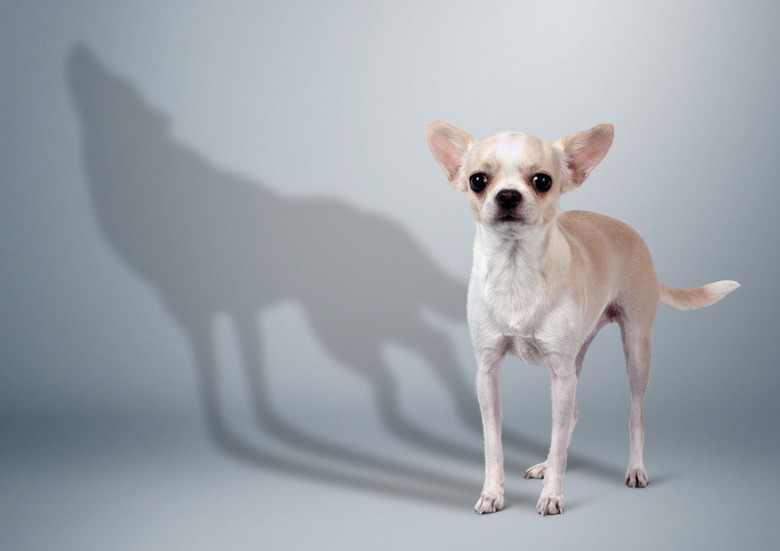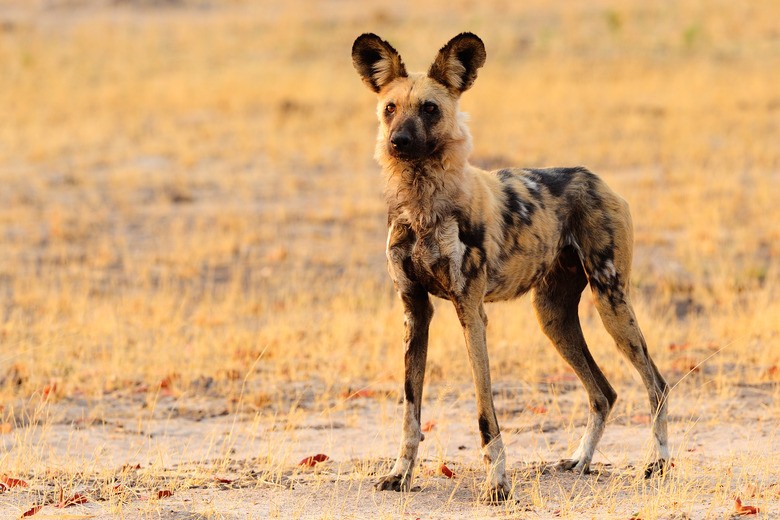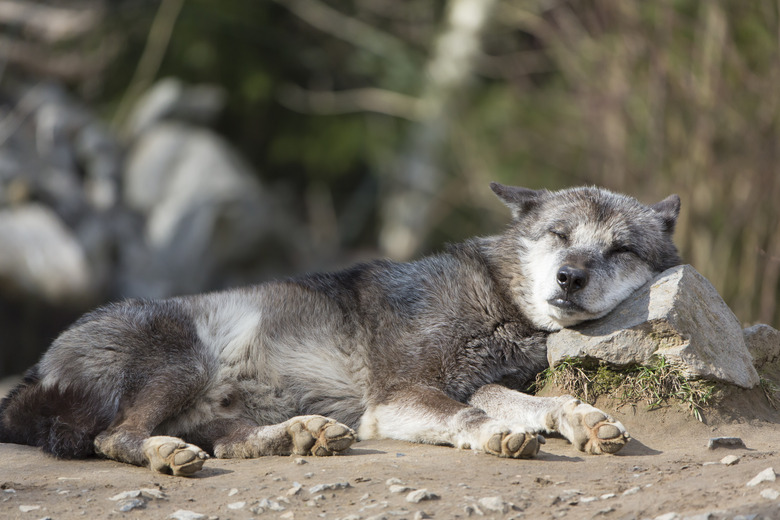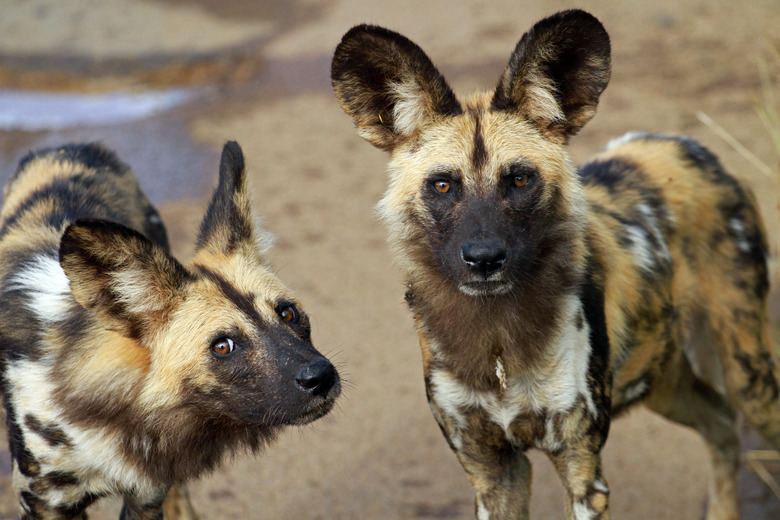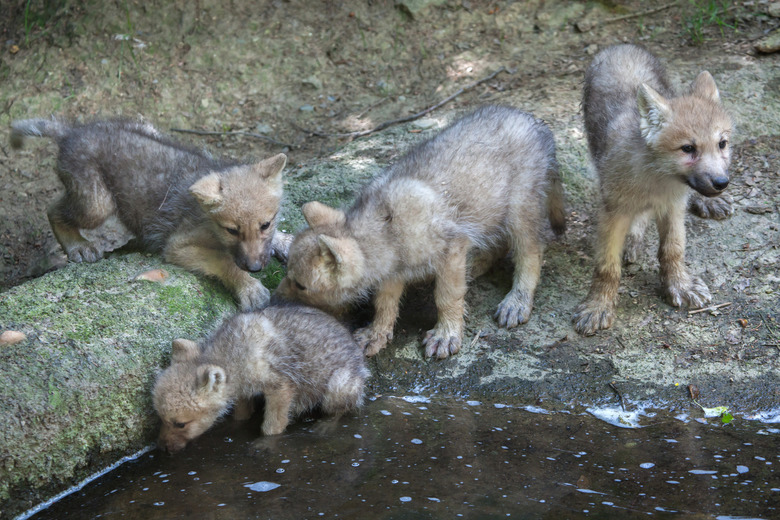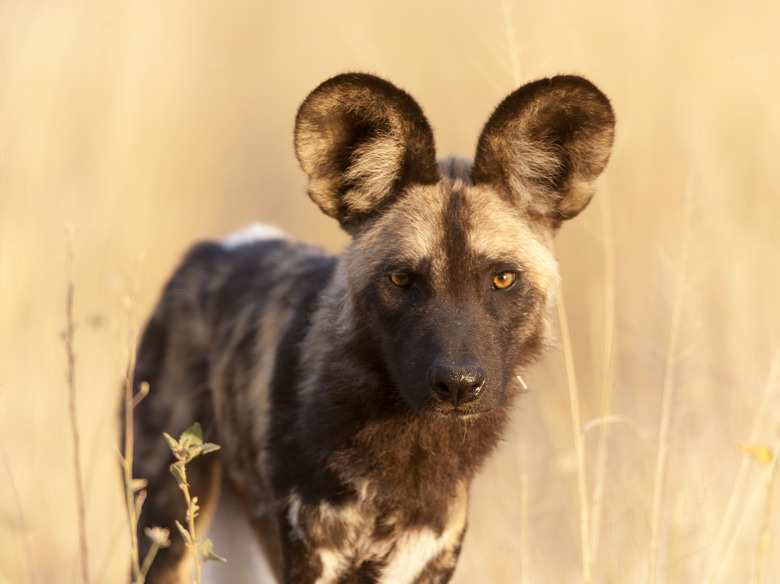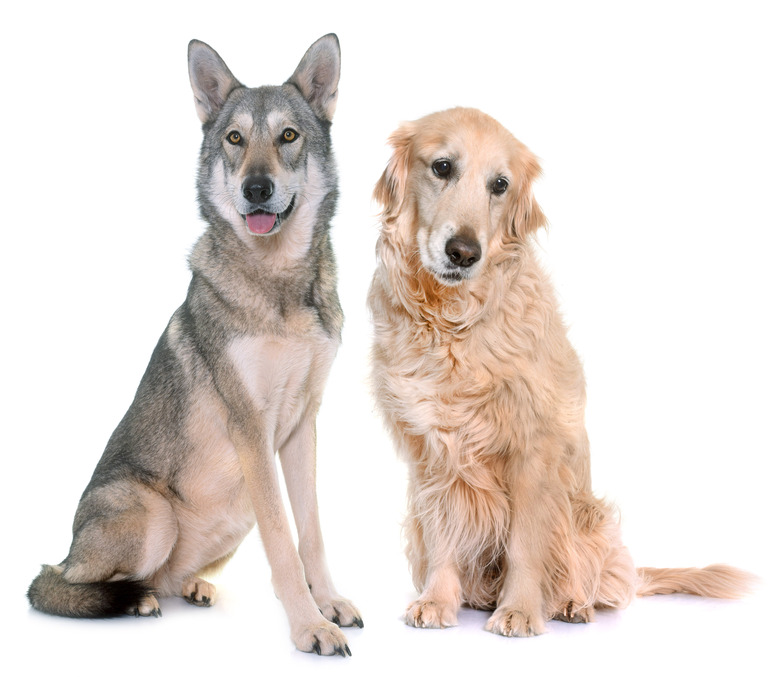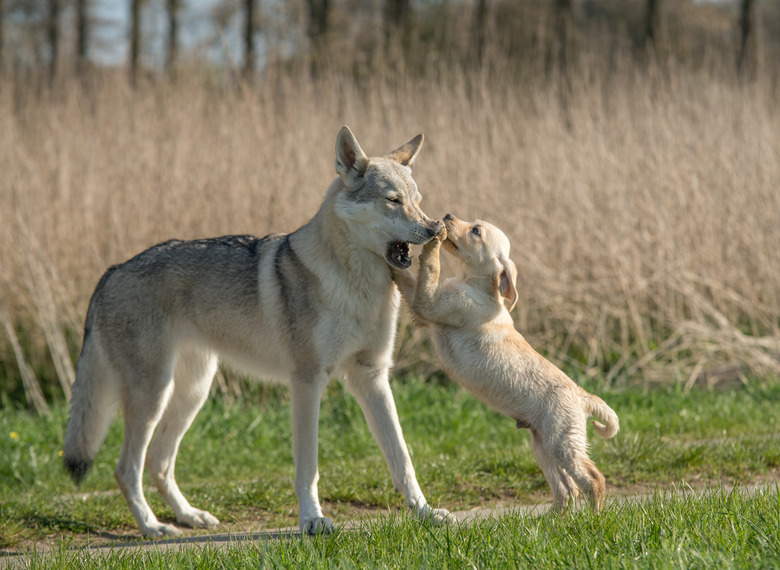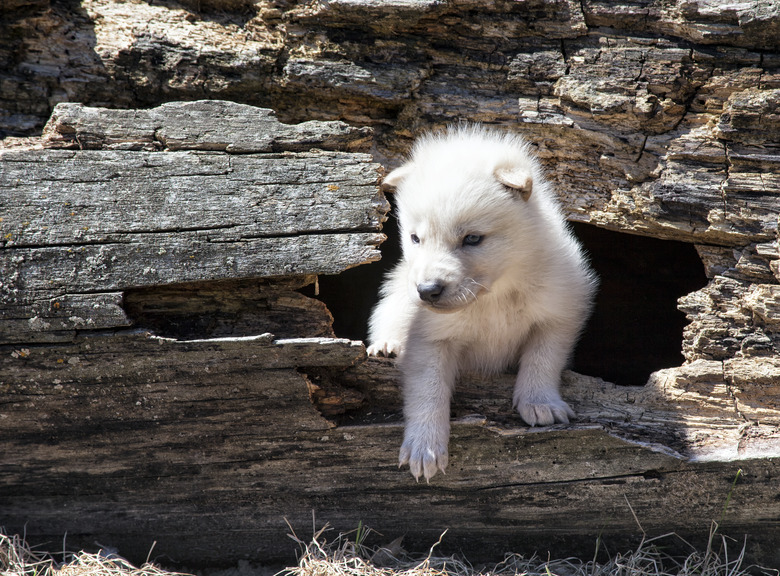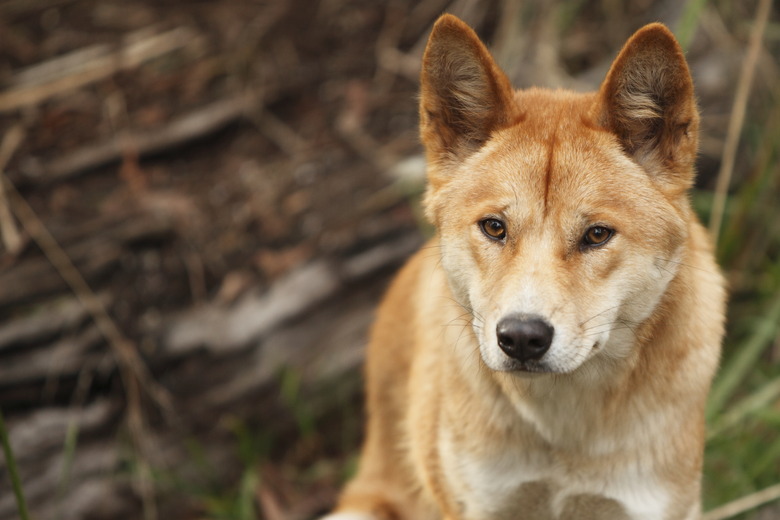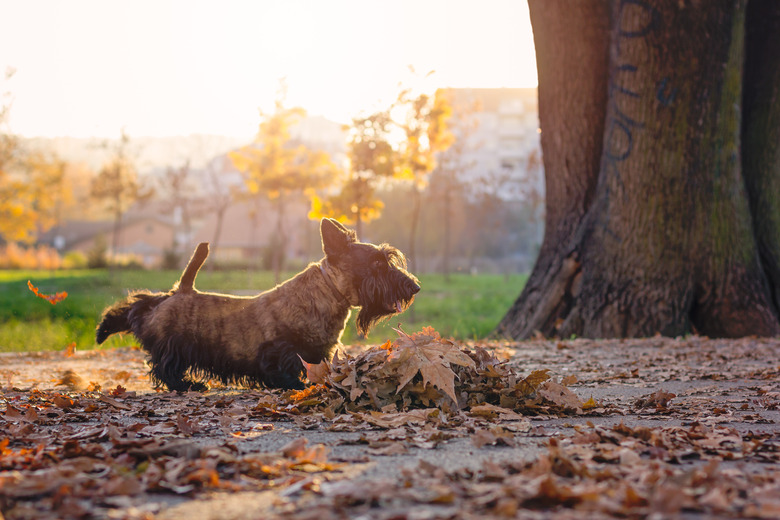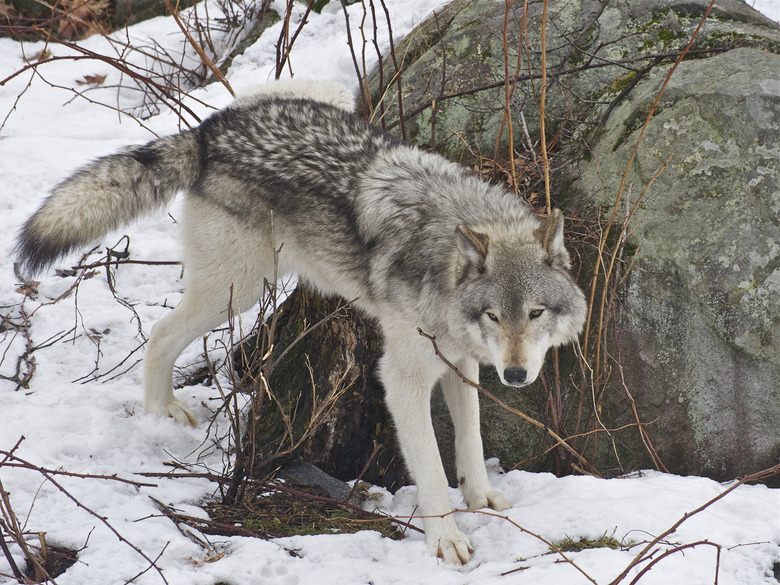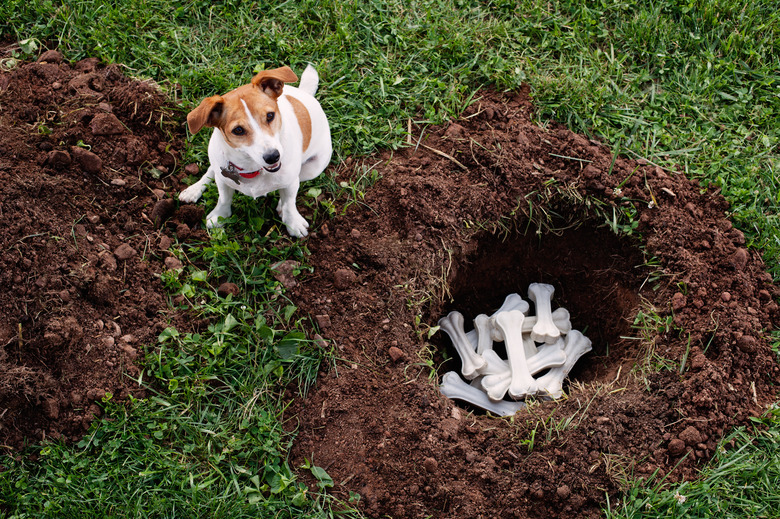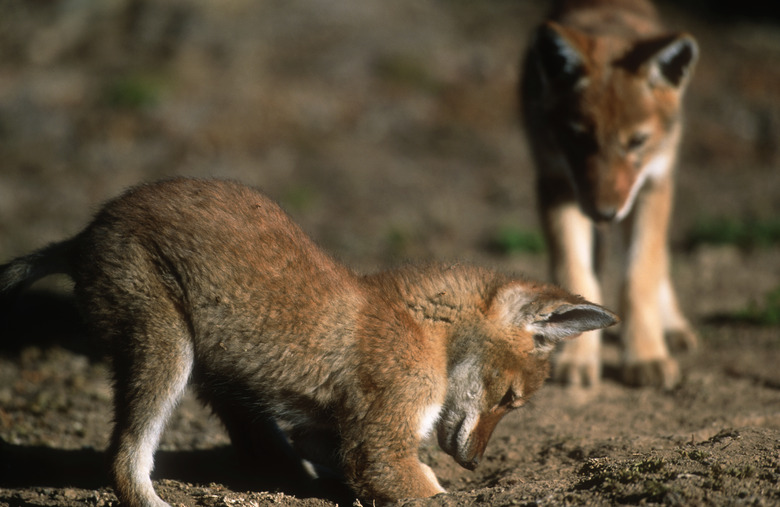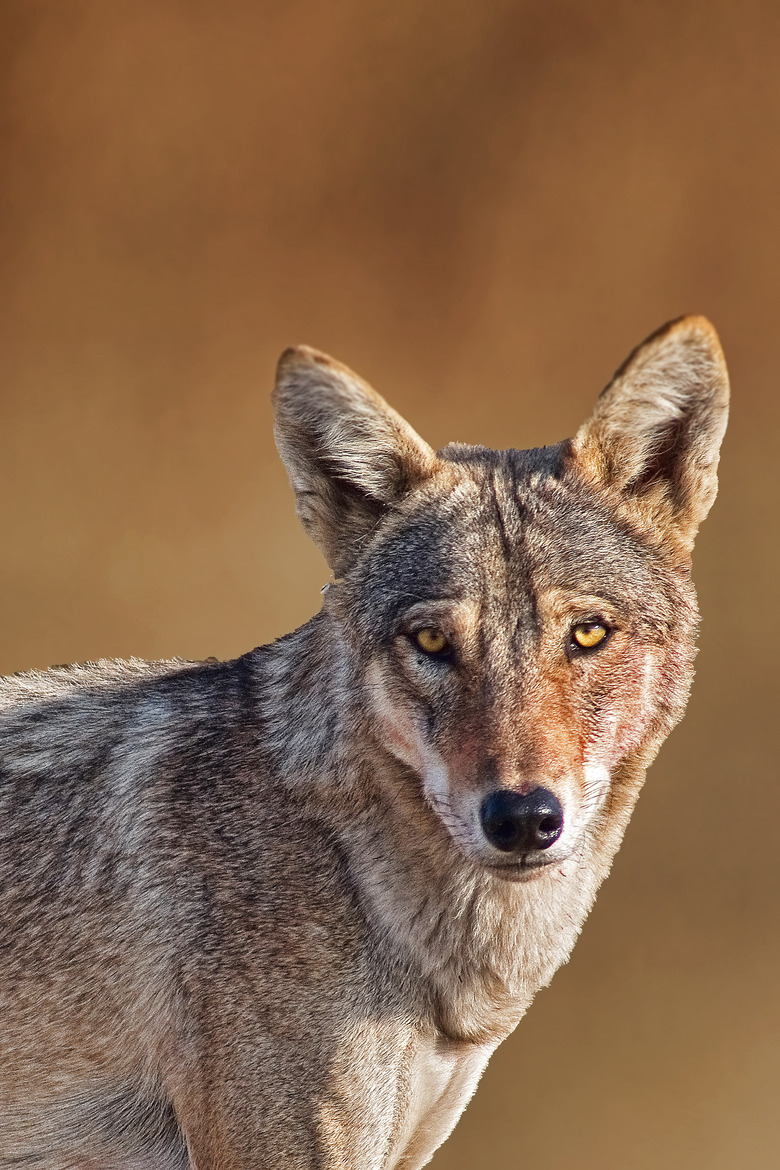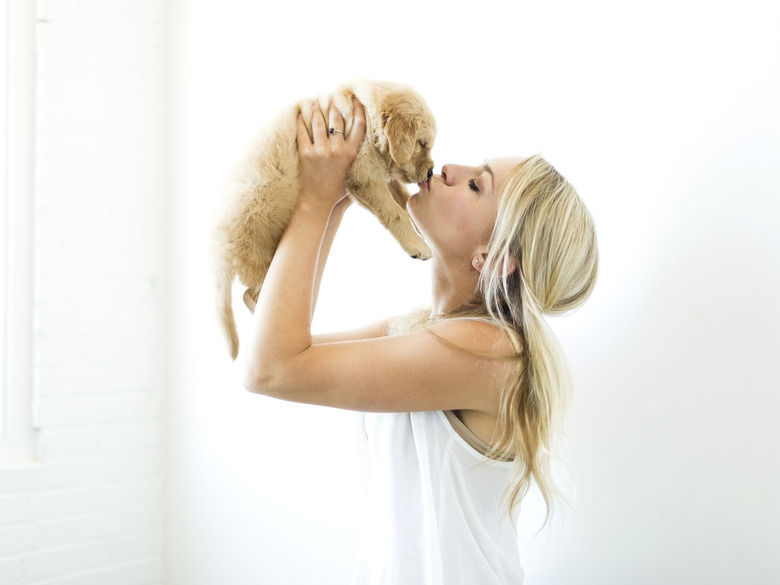What Are The Differences Between Wild And Domestic Dogs?
For years and years now, we've invited dogs into our homes to share our lives and kiss our faces. By now, we all know the basic story of how the love between dogs and humans grew—first there were wolves, then we were like "oh, these are cute and awesome" and the nicest, cutest, awesomest wolves got invited more and more into our lives and they bred with each other and their pups were even nicer and cuter still. Then, we started breeding dogs to do specific jobs, like hunting or herding. And then, eventually, that whole selective breeding thing kind of snowballed and now we have pugs and French bulldogs and Chihuahuas.
But even with all of the human intervention, there are also still wolves. And, more than that, there's a third category of canines that we don't think about as often: Wild dogs. Here's what you need to know about how our domesticated BFFs are different from their wilder cousins, which include wolves, coyotes, dingos, and a host of other canines (and how they're still pretty similar).
How wild dogs and domestic dogs are different:
1. There are some obvious physical differences.
Evolution. It's a thing. As a result, domestic dogs and their wild cousins have some obvious, see-them-clearly-with-your-own-two-eyes differences. For example, fun fact, the African Wild Dog has only four toes per foot. Other dogs have five toes on their feet. The African Wild Dog also has big, round ears—you know, all the better to hear you with, my dear (and to hear all of those dangerous, ferocious predators they share their environment with). Pugs' little folded ears are adorable and they can survive with teeny tiny, possibly useless ears because we don't let lions and hyenas prowl around our apartments and hunt them.
2. Wild dogs sleep even more than your pet.
It might not seem possible, but dogs in the wild might be clocking more nap hours than even your lazy retriever. Why? Because they have to fend for themselves and that requires a lot of energy.
According to the New York Times, a half-century-long study of wolves found that they would hunt and kill as a group, feast on the spoils of their hunt, and then go into a massive food coma, sleeping about 30 percent of the time.
"Wolves have plenty of reason to rest," the study's researchers wrote. "When wolves are active, they are really active. On a daily basis, wolves burn about 70 percent more calories compared to typical animals of similar size." The study also pointed out that, when they're hunting, wolves burn calories 10 to 20 times as fast as they do when they're resting.
And wolves aren't the only wild canines that need a lot of nap time. African wild dogs usually spend the entire day sleeping with their pack and then are only active in bursts when the sun goes down.
3. Wolves actually work together better than dogs.
You might think that thousands of years being domesticated by humans would make dogs the more cooperative members of the canine family tree, but not so. A 2017 study published in Science found that wolf cubs are better than dogs at working together to get a meal. Go figure.
4. Wild dogs' vocalizations go beyond those of domestic dogs.
While humans might be sure they can tell what their pup is trying to convey with a particular bark or whine or whimper, wild dogs actually have a much wider range of vocalization. They have very specific greeting sounds and even a special "hoo" sound they let out when one gets lost from the group.
5. Dogs and wild dogs can't breed with each other (but dogs and wolves can).
Even though dogs still have some stuff in common with their wild cousins, they can't reproduce with most of them. Dogs and wolves can breed together, but dogs and wild dogs (like coyotes, dingos, and African Wild Dogs), just can't.
6. Wolves and wild dogs can never be domesticated.
Wolves and wild dogs can be adorable sometimes, but make no mistake: They can never, ever be domesticated into house pets. A recent study found that even though wolves raised by humans can feel bonded to people, they can't become truly domesticated. Translation: You can't ever invite a wolf to cuddle with you in bed unless you're itching to reenact Little Red Riding Hood.
7. Wolves develop faster than dogs.
Dogs are smart and highly trainable, but years with us have made them soft, apparently. Their wild and wolfly cousins mature much faster as pups than do domestic dogs. Domestic puppies are even slower to open their eyes socialize than wolf pups (dog puppies do these things at four weeks, whereas wolf pups start at two weeks).
8. Wolves and wild dogs are even smarter than domestic dogs.
We all think our dogs are the smartest boys and girls in the land, but even though they can do jobs for us and learn tons of tricks, they're still not the Einsteins of their family tree. Dingos and wolves are both smarter than domestic dogs, according to a study in which the different species were put through the "detour test." In the test, the dogs, wolves, and dingos are shown a treat through a clear or mess fence and then have to find a door to the other side and double back to get the food. Wild dogs and wolves do better on the test, getting to the food faster than their domesticated kin.
How wild dogs and domestic dogs are still kind of the same:
1. They both mark their territory.
You know how your dog pees on stuff to say to other animals, "Hey, this is mine" or, at very least, "Fido Wuz Here"? Well, wild canines, like wolves and wild dogs, are like, "SAME, man."
2. They both love to bury things they want to save for later.
Your average domesticated dog doesn't have to worry about where his next meal is coming from (answer: Chewy.com)—but that doesn't mean his instincts for hoarding things of value have gone away. That's why domestic dogs bury bones.
In the wild, wolves et al. are burying morsels of food to tide them over before the next kill, but you know...similar?
3. They all have the same ancestors.
Domestic dogs, wolves, another other wild dogs all have the same ancestor: The small South Asian wolf.
4. They're all very social.
Here's another big thing that all canines have in common: They're all very social creatures. They live in packs and their social standing is very important to them. In the wild, it's key to survival. For our domestic dogs, it's pivotal to their psychological and emotional well-being.
